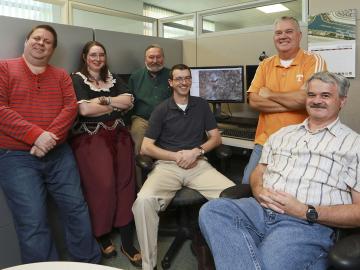Filter News
Area of Research
- (-) Climate and Environmental Systems (2)
- (-) Geographic Information Science and Technology (2)
- Advanced Manufacturing (7)
- Biological Systems (3)
- Biology and Environment (17)
- Biology and Soft Matter (1)
- Building Technologies (2)
- Chemical and Engineering Materials (2)
- Chemistry and Physics at Interfaces (6)
- Clean Energy (110)
- Computational Chemistry (1)
- Computer Science (2)
- Energy Frontier Research Centers (7)
- Energy Sciences (1)
- Functional Materials for Energy (6)
- Fusion and Fission (5)
- Fusion Energy (6)
- Isotope Development and Production (1)
- Isotopes (4)
- Materials (89)
- Materials for Computing (5)
- Materials Synthesis from Atoms to Systems (5)
- Materials Under Extremes (6)
- National Security (12)
- Neutron Data Analysis and Visualization (2)
- Neutron Science (37)
- Nuclear Science and Technology (28)
- Nuclear Systems Modeling, Simulation and Validation (2)
- Quantum Condensed Matter (2)
- Quantum information Science (3)
- Reactor Technology (1)
- Supercomputing (58)
- Transportation Systems (2)
News Type
News Topics
Media Contacts


A multi-institutional research team found that changing environmental conditions are affecting forests around the globe, leading to increasing tree death and uncertainty about the ability of forests to recover.

Bruce Lester has had a lot of jobs: fisherman, horse trainer, “professional stair builder.” He last worked for a real estate company, surveying land using geographic software. “When the bottom fell out of the construction industry and the company downsized, I got laid off,”

Researchers at the Department of Energy’s Oak Ridge National Laboratory have developed a population distribution model that provides unprecedented county-level predictions of where people will live in the U.S. in the coming decades.




